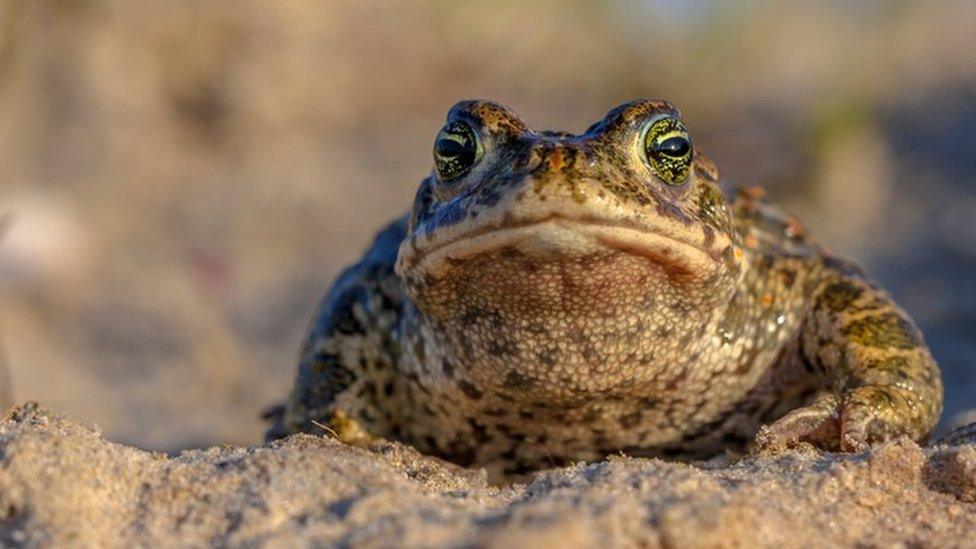National Trust: New project to restore wildlife at Formby beach
- Published
- comments

Natterjack toad populations are increasingly under pressure due to loss of habitat and climate change
A new project has been announced which aims to restore wildlife to Formby beach in North-West England.
The National Trust project will see the five acre site, which was once used as a dumping ground, restored back to sand dunes.
The area is currently flat and full of nettles, which leave no room for native coastal plants or creatures to thrive.
It's hoped that it will help wildlife including the rare natterjack toad which lives in sandy conditions.
What will happen?
Formby beach in Merseyside is famous for its sand dunes
The restoration project will involve using diggers to remove parts of the current site.
This will allow sand blown from the beach to be pushed through the gaps, covering the nettles and create new natural sand dunes.
Isabelle Spall from the National Trust said, "Dunes should look like sandy hills, with rolling undulations - but this area is completely flat and covered in nettles and thistles.
"It effectively creates a barrier that prevents toads and lizards from being able to move across the site.
"The animals need areas of bare sand mixed with patches of vegetation, so they have places to hunt and bask as well as room to hibernate, and for lizards, somewhere to lay eggs," she added.
Natterjack toads are the loudest amphibians in Europe. Their call can be heard more than a mile away!
Twelve pools will be created along the length of Formby dunes to resemble the ponds to help the natterjack toads, which have seen around three quarters of their breeding sites vanish in the past one hundred years.
It is also hoped the work will help wildlife including sand lizards, which bury their eggs in bare sand and the rare northern tiger beetle, which is only found in Merseyside and Cumbria.
- Published27 January 2022
- Published26 January 2022
- Published1 February 2022
